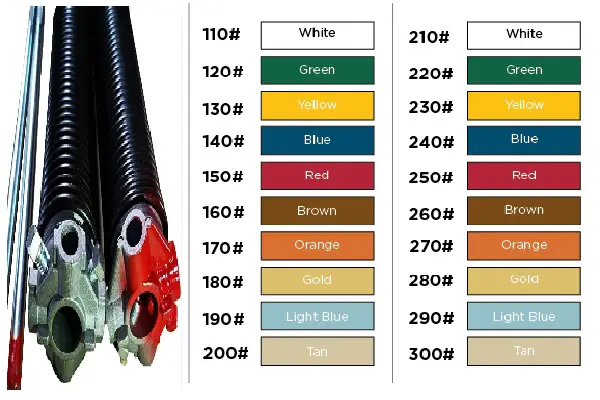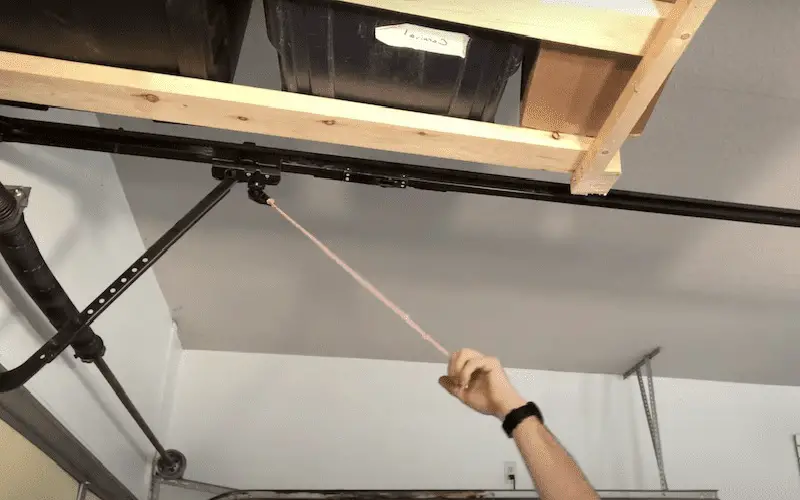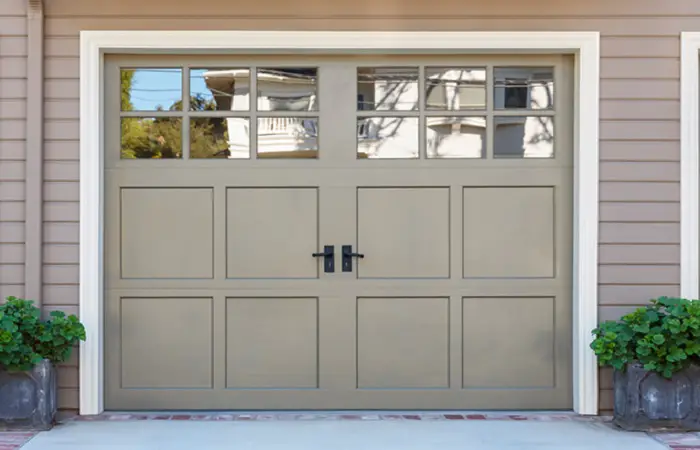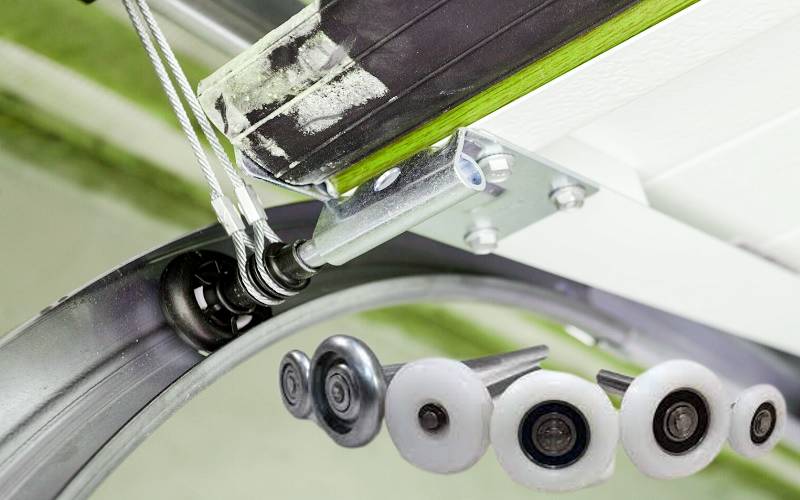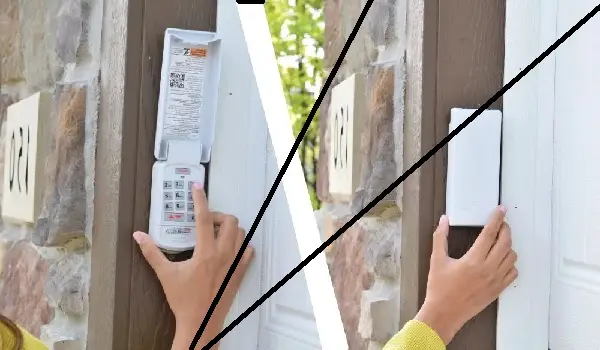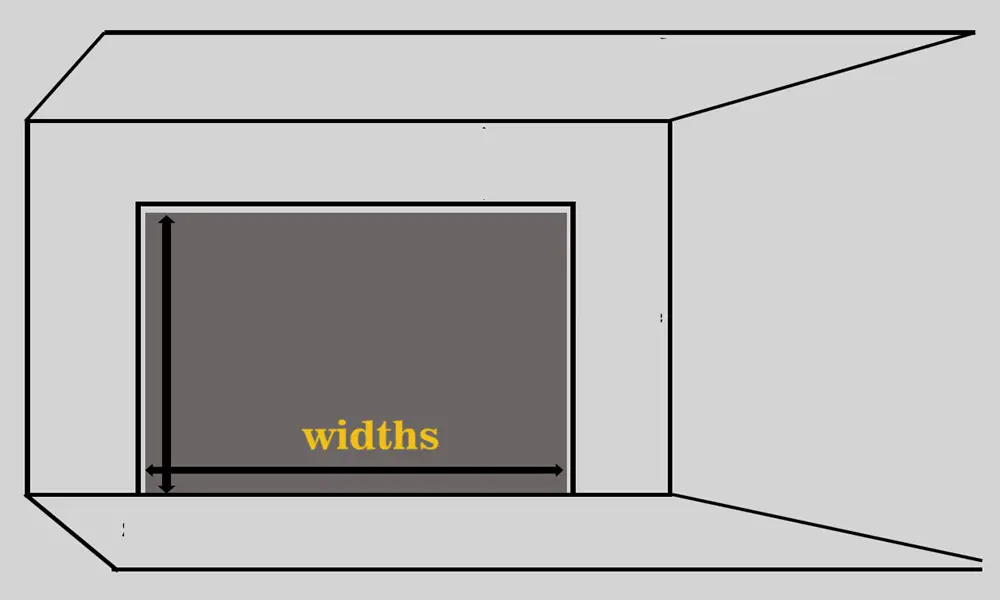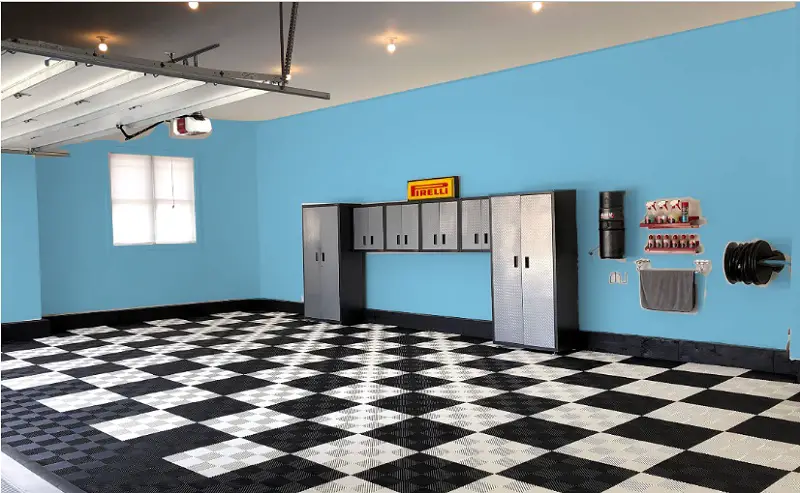Understanding Garage Door Spring Color Codes
Garage Door Spring Color Codes When it comes to garage door systems, there are many components that work together to […]

Garage Door Spring Color Codes

When it comes to garage door systems, there are many components that work together to ensure smooth operation and safety. One crucial element that homeowners should be familiar with is the garage door torsion spring. These springs play a vital role in counterbalancing the weight of the door, allowing it to open and close efficiently.
One aspect of garage door torsion springs that often perplexes homeowners is the color coding system. Garage door torsion springs are marked with different colors, and these colors hold significant meaning. By deciphering the garage door spring colors, homeowners can identify the right spring for their particular garage door system.
In this article, I will guide you through the process of deciphering garage door spring color codes and explain why they are essential for understanding the size and tension provided by the springs. With this knowledge, you can ensure the proper functioning and safety of your garage door system.
Why Garage Door Torsion Springs Have Color Codes
Garage door torsion springs are color-coded for a crucial reason – to indicate their size and the amount of tension they provide. As an integral component of your garage door system, understanding these color codes is of utmost importance for ensuring proper functioning and maintaining the safety of both you and your property.
When it comes to garage door spring color identification, each color represents a specific wire size and the corresponding force required to balance the door. These color codes, standardized across the industry, provide an easy and efficient way to identify and select the appropriate torsion spring for your garage door.
To help you grasp the significance of garage door spring color coding, let’s examine a few examples:
Example 1:
A yellow-colored torsion spring typically indicates a 0.250-inch wire size and is designed to balance a garage door with a specific weight range, such as 80 to 89 pounds.
Example 2:
A red-colored torsion spring may represent a larger wire size of 0.3125 inches, suitable for heavier garage doors weighing around 120 to 139 pounds.
Example 3:
A blue-colored torsion spring might signify a 0.375-inch wire size, providing the necessary tension for garage doors weighing approximately 180 to 209 pounds.
By familiarizing yourself with these color codes and their corresponding specifications, you can easily determine the correct torsion spring for your specific garage door. This knowledge ensures that your door operates smoothly, minimizes the risk of damage or malfunction, and ultimately enhances the safety and security of your property.
| Color Code | Wire Size (inches) | Weight Range (pounds) |
|---|---|---|
| Yellow | 0.250 | 80-89 |
| Red | 0.3125 | 120-139 |
| Blue | 0.375 | 180-209 |
As you can see from the table above, the color codes provide a quick reference guide for selecting the appropriate torsion spring based on wire size and weight range. It’s important to note that these color codes may vary slightly depending on the manufacturer, so consulting the manufacturer’s documentation or seeking professional assistance is advisable if you are unsure.
Now that you understand the importance of garage door spring color coding, let’s explore the process of deciphering these color codes in more detail in the next section.
Deciphering Garage Door Spring Color Codes
In order to identify the right torsion spring for your garage door, it is essential to understand the color codes associated with garage door springs. These color codes indicate the size and strength of the springs, making it easier for homeowners to select the appropriate one for their specific door.
So, how do you decipher these garage door spring color codes? To help you with this, we have prepared a comprehensive garage door spring color chart below:
| Wire Size | Spring Color | Door Weight |
|---|---|---|
| 0.192″ | Yellow | up to 150 lbs |
| 0.207″ | White | up to 180 lbs |
| 0.218″ | Green | up to 200 lbs |
| 0.225″ | Red | up to 220 lbs |
| 0.234″ | Blue | up to 240 lbs |
| 0.243″ | Orange | up to 250 lbs |
| 0.250″ | Black | up to 300 lbs |
By referring to this garage door spring color chart, you can easily match the color of your spring with the corresponding wire size and door weight. This will ensure that the spring provides the necessary tension for optimal performance and safety of your garage door.
Remember, identifying the right torsion spring color is crucial for maintaining the functionality and longevity of your garage door. When in doubt, consult with a professional who can guide you through the process and help you make the right selection.
Understanding the Different Types of Garage Door Springs
Before diving deeper into color codes, it’s important to understand the different types of garage door springs. Garage doors typically use two main types of springs: torsion springs and extension springs. Each type has its own unique characteristics and functions.
Torsion Springs
Torsion springs are the most common type of springs used in garage doors. They are installed horizontally above the garage door opening and work by twisting or coiling to generate the necessary force to lift and lower the door.
“Torsion springs are designed to bear the weight of the garage door, making them an essential component for smooth and controlled door movement. They provide balance and stability, ensuring the door operates safely and efficiently.”
Torsion springs are available in various sizes and wire diameters, depending on the weight and size of the garage door. They are typically mounted on a shaft above the door and use cables attached to the bottom corners of the door for lifting and lowering.
Extension Springs
Extension springs are another type of springs commonly used in garage doors. Unlike torsion springs, extension springs are mounted on either side of the door, parallel to the horizontal tracks.
“Extension springs work by expanding and contracting as the door opens and closes. When the door is closed, the springs are under tension, and they stretch to help lift and support the door’s weight.”
Extension springs are usually attached to eyebolts or brackets and have safety cables to prevent them from causing harm if they break. They are available in various lengths and tension ratings to accommodate different door sizes and weights.
Understanding the different types of garage door springs is crucial for proper maintenance and repair. In the next section, we will delve into deciphering the color codes associated with garage door torsion springs to further enhance your knowledge of these essential components.
How to Measure Garage Door Torsion Springs
To accurately identify the correct torsion spring for garage door, you need to know how to measure it. Follow these step-by-step instructions to measure the dimensions of a torsion spring:
- Disconnect the Garage Door: Before measuring the torsion spring, ensure that the garage door is in a closed position and fully disconnected from the garage door opener.
- Measure the Overall Length: Use a tape measure to measure the length of the entire spring, from one end to the other. Record this measurement in inches.
- Measure the Wire Diameter: Place your tape measure across the width of the spring’s wire to determine its diameter. Record this measurement in inches or fractions of an inch.
- Count the Coils: Count the number of coils in the spring. Start from one end and count all the way to the other end. Take note of the total number of coils.
- Measure the Inside Diameter: Use the tape measure to measure the inside diameter of the spring. Measure the inner diameter of the spring’s coils. Record this measurement in inches or fractions of an inch.
Once you have obtained these measurements, you can confidently proceed to identify the correct torsion spring color for your garage door.
Pro Tip: If you’re unsure about taking measurements or need assistance, it’s recommended to consult a professional garage door technician for accurate measurement and identification.
| Measurement | Description | Recorded in |
|---|---|---|
| Overall Length | The length of the entire spring, from one end to the other | Inches |
| Wire Diameter | The diameter of the spring’s wire | Inches or fractions of an inch |
| Coil Count | The total number of coils in the spring | N/A |
| Inside Diameter | The inner diameter of the spring’s coils | Inches or fractions of an inch |
Identifying the Right Torsion Spring Color
Now that you understand the color codes and have measured your garage door torsion spring, it’s time to identify the correct torsion spring color that matches your measurements. This step is crucial to ensure that your garage door operates smoothly and safely.
To identify the right torsion spring color, refer to the chart below. It provides a comprehensive list of color codes and their corresponding wire sizes and door weights:
| Color | Wire Size (inches) | Door Weight (lbs) |
|---|---|---|
| Yellow | 0.225 | 90-95 |
| White | 0.234 | 96-100 |
| Green | 0.243 | 101-105 |
| Red | 0.250 | 106-110 |
| Brown | 0.262 | 111-115 |
| Blue | 0.273 | 116-120 |
| Yellow | 0.283 | 121-125 |
| White | 0.295 | 126-130 |
Once you have determined the wire size and the corresponding door weight for your garage door, simply match it to the color code listed in the chart. This will help you identify the right torsion spring color that meets your specific requirements.
Remember, using the correct torsion spring color ensures optimal performance and extends the lifespan of your garage door system. If you’re unsure or need assistance in identifying the right color, it’s always recommended to consult a professional.
The Importance of Properly Sized Torsion Springs
When it comes to your garage door, the proper sizing of torsion springs is of utmost importance. Not only do properly sized springs ensure the smooth operation of your garage door, but they also play a critical role in maintaining its overall safety.
Choosing and installing the right size torsion spring is essential for several reasons. First and foremost, a properly sized spring ensures that your garage door can open and close smoothly, without any jerking or straining. This not only extends the lifespan of your garage door system but also prevents unnecessary wear and tear on other components.
Additionally, using the correct size torsion spring reduces the risk of accidents and injuries. A spring that is too weak may fail to support the weight of the door, causing it to slam shut unexpectedly. On the other hand, an overly strong spring can lead to excessive force, making it difficult to control the door’s movement and increasing the risk of accidents.
Properly sized torsion springs also help preserve the balance of the door. When a garage door is properly balanced, it operates smoothly and efficiently. Incorrectly sized springs can throw off this balance, causing the door to become misaligned. This not only affects the functionality of the door but can also put strain on other components, leading to premature wear and potential breakdowns.
In conclusion, the importance of using properly sized torsion springs for your garage door cannot be overstated. By ensuring the right size and tension, you can enjoy a smooth and safe operation while extending the lifespan of your garage door system.
Factors to Consider When Replacing Garage Door Springs
If you’re considering replacing your garage door springs, it’s important to take several factors into consideration to ensure a smooth and successful replacement process. By making informed decisions, you can avoid potential issues and enjoy a properly functioning garage door. Below, I’ve outlined some important factors to keep in mind:
- Type of Spring: Determine whether your garage door uses extension springs or torsion springs. This will impact the type of replacement springs you’ll need.
- Spring Size: Carefully measure the dimensions of your existing springs to ensure you select the correct size replacements. Refer to the manufacturer’s guidelines or consult a professional if you’re unsure.
- Door Weight: Consider the weight of your garage door, as it influences the amount of tension required in the springs. Heavier doors typically require springs with higher tension levels.
- Quality and Durability: Invest in high-quality springs that are designed to last. Cheaper alternatives may save you money upfront but may need to be replaced more frequently.
- Safety: Prioritize safety when replacing garage door springs. If you’re uncomfortable with DIY installation, it’s best to hire a professional to ensure proper installation and minimize any potential risks.
Remember, garage door springs are under high tension and can be dangerous to handle. Always follow manufacturer instructions or seek professional assistance to guarantee a safe and effective replacement process.
Consider these factors carefully before embarking on a garage door spring replacement project. By doing so, you can select the right springs and ensure a safer and more efficient operation of your garage door.
DIY vs. Professional Garage Door Spring Replacement
When it comes to replacing garage door springs, homeowners are faced with a crucial decision – should they attempt a DIY replacement or seek the help of a professional? While both options have their merits, it’s essential to weigh the pros and cons before making a choice.
DIY Garage Door Spring Replacement
Some homeowners may choose to replace their garage door springs themselves, motivated by the potential cost savings and the satisfaction of completing a hands-on project. However, it’s important to consider the following aspects before embarking on a DIY replacement:
- Safety concerns: Garage door spring replacement can be dangerous, as springs are under high tension. Inadequate knowledge or mishandling can lead to injuries or property damage.
- Tools and expertise: DIY replacements require specific tools and a good understanding of garage door mechanisms. Inexperienced individuals may find it challenging to accurately measure and install the springs.
- Warranty implications: DIY replacements may void any existing warranties on the garage door system.
Professional Garage Door Spring Replacement
Seeking professional assistance for garage door spring replacement has its own advantages:
- Expertise and experience: Professional technicians are trained and experienced in handling garage door spring replacements, ensuring the job is done safely and efficiently.
- Access to quality parts: Professionals have access to high-quality springs that are suitable for specific garage door systems.
- Warranty coverage: Professional installations often come with warranty coverage, providing peace of mind for homeowners.
Ultimately, the decision between DIY and professional garage door spring replacement depends on one’s comfort level, experience, and willingness to take on the associated risks. If you have the necessary skills and knowledge, opting for a DIY replacement might be a viable choice. However, if safety and convenience are top priorities, it’s recommended to enlist the services of a reputable professional for a worry-free and efficient spring replacement.
Conclusion
Understanding garage door torsion spring color codes is crucial for maintaining the functionality and safety of your garage door system. By deciphering the color codes and identifying the appropriate spring for your specific garage door, you can ensure its smooth operation.
Remember, the color codes indicate the size and tension of the springs. By measuring your garage door torsion spring accurately and matching the measurements with the correct color, you can avoid potential complications and ensure the proper functioning of your garage door.
Whether you are replacing garage door springs or simply performing maintenance on your existing ones, always prioritize using properly sized springs. This not only ensures optimal performance but also plays a crucial role in maintaining the overall safety of your garage door.
Now armed with the knowledge of garage door torsion spring color codes, you can confidently tackle any issues related to your garage door springs. Understanding the significance of these color codes empowers you to make informed decisions and take the necessary steps to keep your garage door system in excellent working condition.
